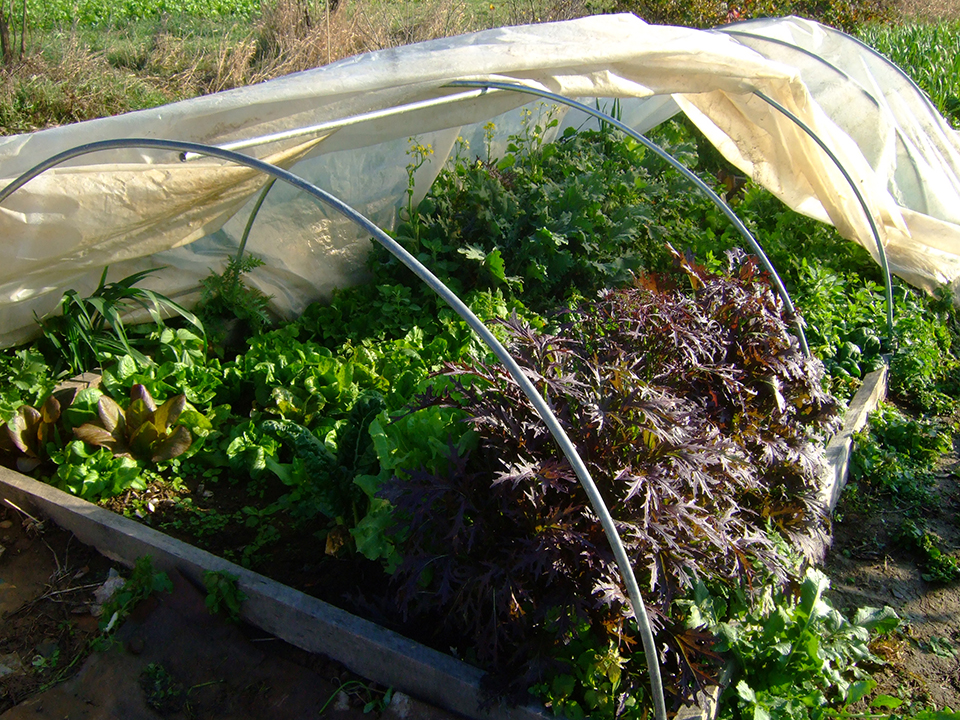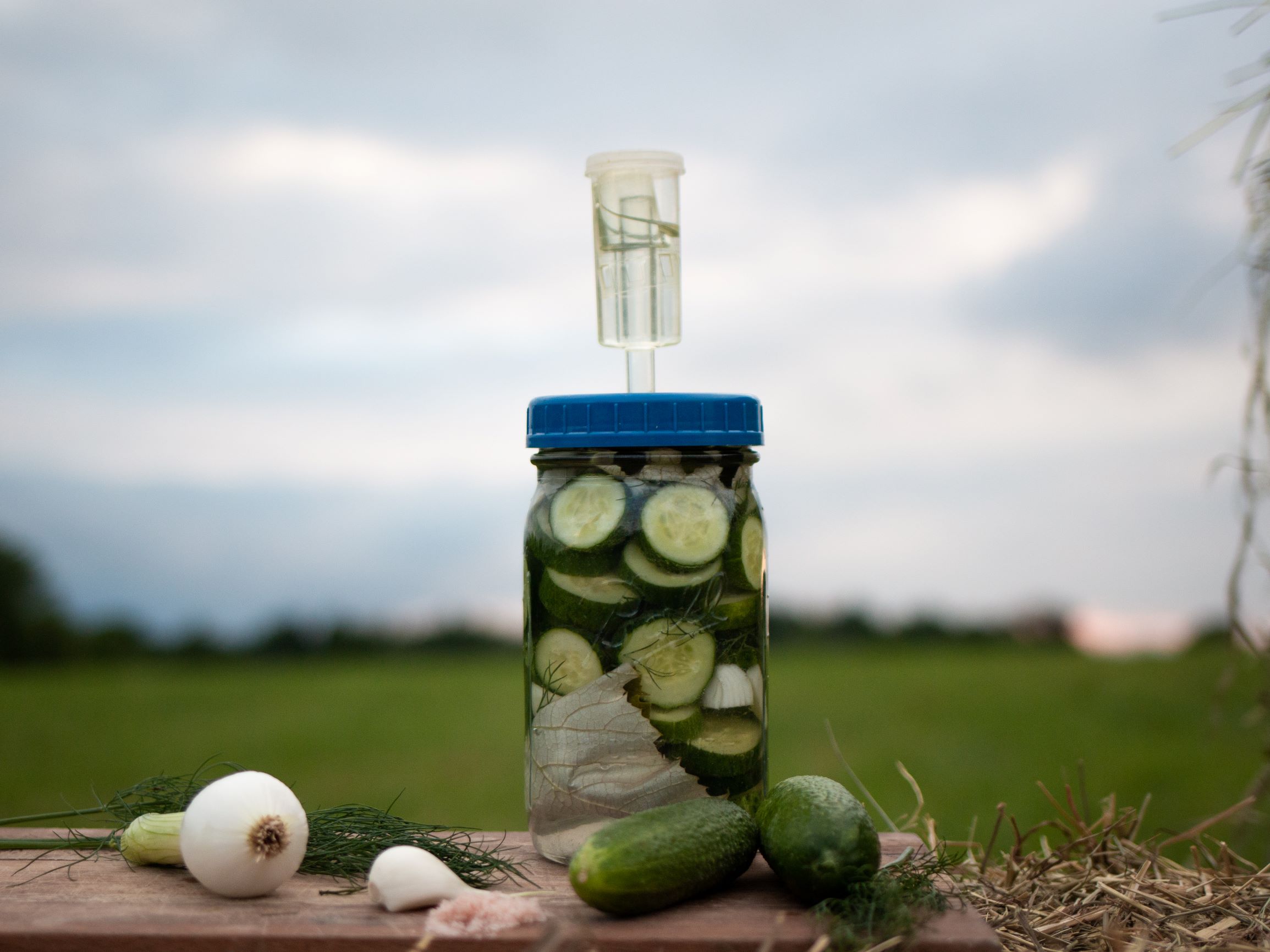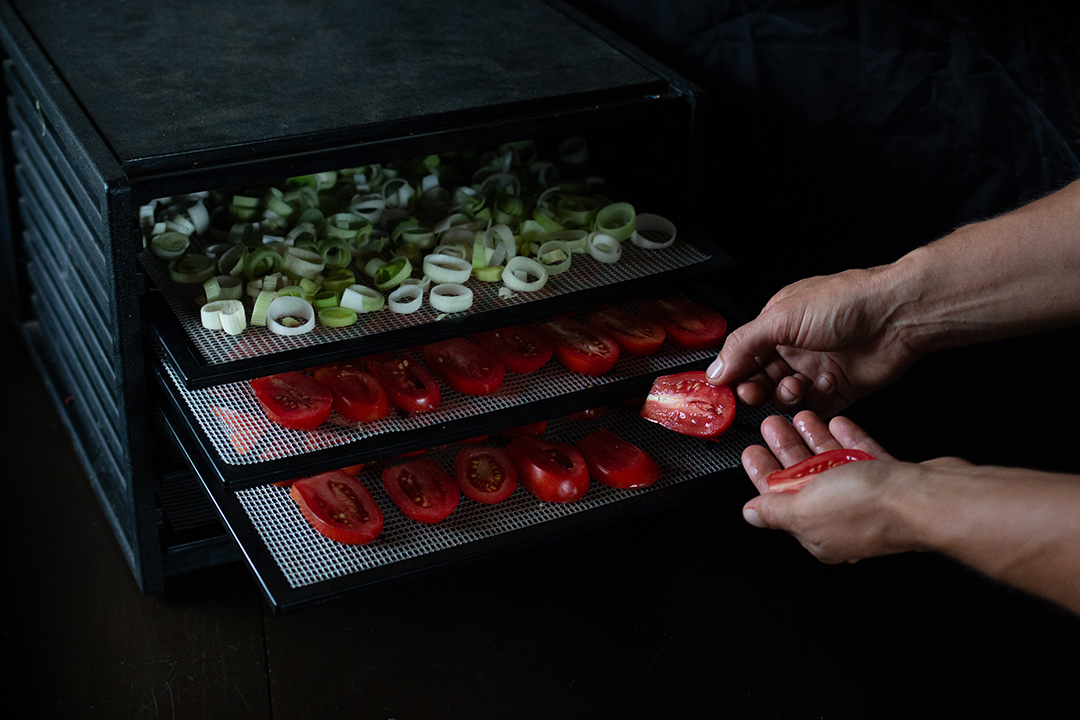
October is when we are near the end of gathering and preserving food for the winter ahead. In olden days, this cache of food squirreled away was sometimes called a larder and had enough sustenance for a family to stay well fed till spring. In our modern times, many folks depend on the super market to be their sole larder and expect the shelves to always be full. However, in the event of a political crisis, natural disaster or other disruption that might not be the case. When preparedness guru Kathy Harrison visited Lehman’s this fall, she shared that we are 9 meals away from anarchy if a disaster would hit because people today simply do not have that amount of food stored at home. Financial advisors often suggest keeping a 2-3 month emergency cash fund and perhaps everyone should wisely consider having a 2-3 month supply of food on hand for their family.
While our family of seven does make use of a handy bulk food store near us for some weekly groceries, we do try to put up a good supply of our own for the winter. Some of it we raised ourselves and other things were bought locally in quantity when they were in season. Different foods benefit from various storage techniques and what you have available. Here is a glimpse at what our family larder looks like.
Freezing
We are “on-grid” so we do make use of a couple freezers for our pastured chickens, grass fed beef, green beans, broccoli, and fruits like strawberries, blueberries, raspberries, elderberries, currants and more. I am also excited that we have a good stash of pastured butter in the freezer for this winter and I also like to make large batches of chicken broth that we freeze in quart containers.
Canning
I am not a mega-canner like some but we do put up a good amount of tomato products like spaghetti sauce, salsa, tomato juice, and ketchup. Depending on freezer space, we might can some beef and chicken which make for handy quick meals.
Fermenting

Fermenting is one of my favorite ways to store food because of the great nutritional value it offers. In addition to traditional sauerkraut, we lacto-ferment dill pickles, cauliflower and carrots, a salsa base using green peppers, and several veggie combos. These ferments need to be kept cool and are kept in a second refrigerator.
Dehydrating

We were especially diligent in keeping the dehydrator going this season and have numerous jars of herbs for tea and making salve plus dried apples, pears, tomatoes, leeks and more. Once fully dried, we put them in airtight jars and keep in an area that is cool and dark.
Root Cellaring
We are thankful to have an old fashioned root cellar on the farm. It is a packed earth floor, cool and damp which are perfect conditions for storing crops like potatoes, carrots, beets and turnips. We pack the carrots and beets in 5 gallon buckets and cover with sawdust to prevent drying out.
Dry Storage
Items that are kept in a cool closet or in an upstairs bedroom include butternut squash, garlic, and onions.
Cold Frames
Though not technically a food preservation method, I consider the greens I grow in cold frames and my unheated greenhouse an important part of our winter larder. Being able to harvest fresh spinach, kale, chard and other greens throughout the winter means we don’t have to preserve as many vegetables during the summer months.
What does your family larder look like?
***
 Karen Geiser is a regular demonstrator and homesteading class teacher at Lehman’s.
Karen Geiser is a regular demonstrator and homesteading class teacher at Lehman’s.




























